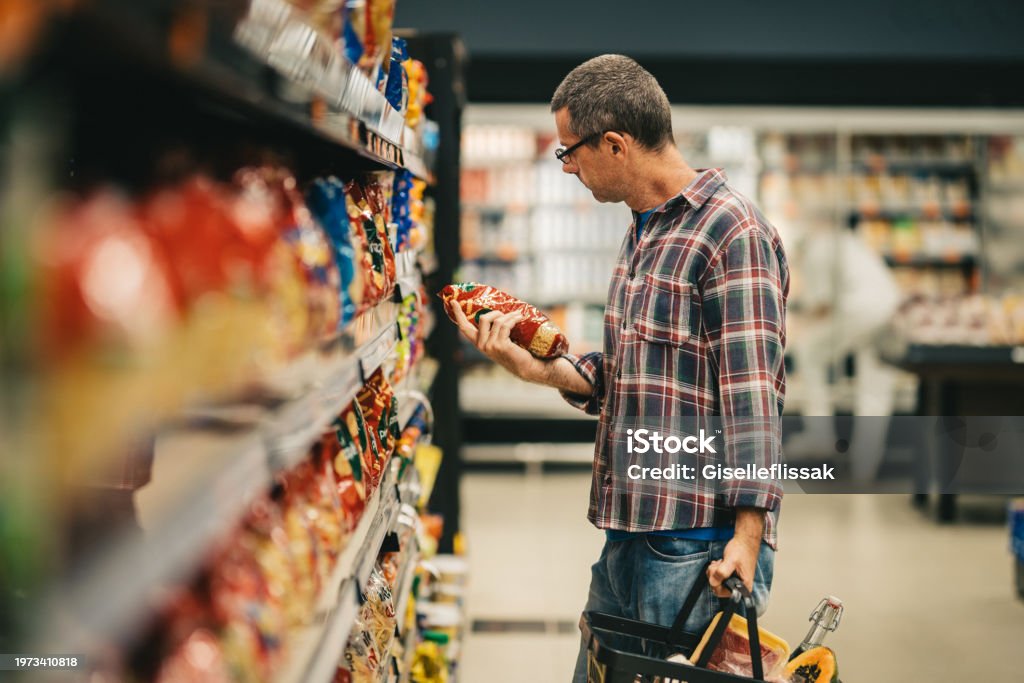How to Create a Grocery Delivery App That Actually Works
The grocery delivery market has exploded into a multi-billion dollar industry. Consumer demand for convenient, on-demand shopping has transformed how we think about getting food from store to doorstep.
The grocery delivery market has exploded into a multi-billion dollar industry. Consumer demand for convenient, on-demand shopping has transformed how we think about getting food from store to doorstep. But creating an app that meets these expectations requires more than just good intentions.
Building a successful grocery delivery app means understanding your users, implementing the right features, and choosing a development approach that fits your timeline and budget. This guide will walk you through everything you need to know—from essential features to launch strategies—plus introduce you to a game-changing platform that could save you months of development time.
Why Grocery Delivery Apps Are Essential for Modern Businesses

The numbers tell a compelling story. Grocery delivery has shifted from a luxury service to an expected convenience. This transformation creates opportunities for both established retailers and entrepreneurial newcomers.
Benefits for Business Owners
Expanded Market Reach: Your business is no longer limited by physical location. Customers across your delivery zone can access your products, effectively multiplying your potential customer base.
Reduced Overhead Costs: Digital operations often require fewer staff members than traditional brick-and-mortar stores. You can serve more customers with a leaner team structure.
Data-Driven Insights: Apps generate valuable customer data. You'll understand purchasing patterns, peak ordering times, and popular products. This information helps optimize inventory and marketing strategies.
24/7 Revenue Potential: Unlike physical stores with set hours, your app can accept orders around the clock. Late-night shoppers and early morning planners become viable customers.
Benefits for Customers
Time Savings: No more wandering grocery store aisles or waiting in checkout lines. Customers can shop while commuting, during lunch breaks, or from their couch.
Product Comparison: Apps make it easy to compare prices, read reviews, and check nutritional information. Customers make more informed purchasing decisions.
Consistent Availability: Popular items are clearly marked as in-stock or out-of-stock. No more disappointing trips to find empty shelves.
Contactless Shopping: Health-conscious consumers appreciate the ability to receive groceries without entering crowded spaces.
Essential Features That Make or Break Your App

A successful grocery delivery app requires careful feature planning. Each component serves a specific purpose in creating smooth user experiences.
Customer-Facing Features
User Registration and Profiles: Simple signup processes encourage adoption. Allow social media logins and guest checkout options. User profiles should store delivery addresses, payment methods, and order history.
Intuitive Product Browsing: Organize products into logical categories. Include high-quality images, detailed descriptions, and search functionality. Filters for dietary restrictions, brands, and price ranges help customers find what they need quickly.
Smart Shopping Cart: Enable easy quantity adjustments, item removal, and saved cart functionality. Show running totals including taxes and delivery fees. Suggest related products or frequently bought items.
Multiple Payment Options: Credit cards, digital wallets, and cash-on-delivery options cater to different customer preferences. Secure payment processing builds trust and reduces cart abandonment.
Real-Time Order Tracking: Customers want visibility into their order status. Provide updates when orders are confirmed, being prepared, out for delivery, and delivered. GPS tracking for delivery personnel adds extra transparency.
Rating and Review System: Enable customers to rate products and delivery experiences. Reviews help other customers make decisions and provide valuable feedback for your business.
Administrative Features
Inventory Management: Track stock levels, set low-inventory alerts, and manage product listings. Integration with existing inventory systems streamlines operations.
Order Management Dashboard: View incoming orders, assign delivery personnel, and track completion rates. Filter orders by status, delivery area, or time frame.
Customer Support Tools: Built-in chat functionality, order issue reporting, and refund processing capabilities. Quick customer service responses improve satisfaction and retention.
Analytics and Reporting: Monitor sales trends, popular products, customer acquisition costs, and delivery performance. Data-driven decisions improve business outcomes.
Delivery Personnel Management: If using your own delivery team, include features for driver registration, route optimization, and performance tracking.
Three Paths to Building Your Grocery Delivery App

When it comes to development, you have three main options. Each approach has distinct advantages and considerations.
Building from Scratch
Custom development gives you complete control over features, design, and functionality. You can create unique selling propositions and integrate with existing business systems seamlessly.
However, this approach typically requires 6-12 months of development time and significant financial investment. You'll need to hire developers, designers, project managers, and quality assurance specialists. The learning curve is steep, and ongoing maintenance requires technical expertise.
Hiring a Development Agency
Professional agencies bring experience and established processes. They handle technical complexities while you focus on business strategy. Quality agencies provide ongoing support and can scale your app as your business grows.
Costs vary widely based on agency location and project scope. Communication challenges can arise if you're working with offshore teams. You'll still need several months for development and testing phases.
Using a Ready-Made Platform
Platforms like Enatega offer pre-built solutions that dramatically reduce time-to-market. Instead of starting from zero, you're customizing and deploying proven technology.
This approach is particularly attractive for businesses that want to test market demand quickly or lack extensive technical resources.
Introducing Enatega: Your Fast Track to Market

Enatega stands out as a comprehensive platform designed specifically for food delivery and logistics businesses. Think of it as getting the core functionality of Foodpanda or UberEats without the years of development time.
What Makes Enatega Different
Complete Solution: Enatega provides customer apps, delivery driver apps, and restaurant/store management dashboards. Everything you need comes in one package.
Proven Technology: The platform has been tested and refined through real-world usage. You're not beta testing—you're implementing a mature solution.
Customization Options: While pre-built, Enatega allows branding customization, feature modifications, and integration with existing systems.
Multi-Platform Support: Deploy on iOS, Android, and web simultaneously. Your customers can access your service regardless of their preferred device.
Scalable Architecture: The platform handles growth from startup to enterprise level. You won't need to rebuild as your business expands.
Key Enatega Features
The platform includes location-based restaurant discovery, real-time order tracking, multiple payment gateways, and comprehensive admin panels. Push notifications keep customers engaged, while analytics help you understand business performance.
Restaurant partners get dedicated dashboards for menu management, order processing, and sales tracking. Delivery drivers receive optimized routes and earnings tracking through their dedicated app.
Step-by-Step Guide to Launching with Enatega
Getting started with Enatega is more straightforward than building from scratch, but still requires careful planning and execution.
Phase 1: Initial Setup and Customization
Purchase and Download: Acquire your Enatega license and download the platform files. The package includes all necessary components and documentation.
Branding Customization: Replace default logos, colors, and app names with your brand elements. Consistency across all customer touchpoints builds brand recognition.
Server Configuration: Set up hosting infrastructure that can handle your expected user load. Enatega provides technical requirements and recommended hosting providers.
Phase 2: Content and Product Setup
Restaurant/Store Onboarding: If you're working with multiple vendors, create accounts and provide training on the management dashboard. Clear guidelines ensure consistent service quality.
Product Catalog Creation: Upload product images, descriptions, prices, and availability information. Organize items into logical categories that make sense for your target customers.
Delivery Zone Configuration: Define your service areas, delivery fees, and estimated delivery times. Be realistic about what you can deliver consistently.
Phase 3: Testing and Quality Assurance
Internal Testing: Place test orders, track deliveries, and verify all payment processes work correctly. Test edge cases like order modifications and cancellations.
Beta User Testing: Invite a small group of potential customers to use the app before public launch. Their feedback helps identify usability issues and improvement opportunities.
Driver Training: If using your own delivery team, ensure they understand the driver app interface and delivery procedures. Consistent service quality starts with proper training.
Phase 4: Launch Preparation
App Store Submission: Submit your customized apps to Apple App Store and Google Play Store. This process can take several days to weeks, so plan accordingly.
Marketing Material Creation: Develop promotional content, social media assets, and launch announcements. Consistent messaging across channels improves campaign effectiveness.
Customer Support Setup: Establish procedures for handling customer inquiries, order issues, and feedback. Responsive customer service differentiates your business from competitors.
Marketing Your New Grocery Delivery App
Having a great app is only half the battle. Success depends on effective marketing that reaches your target customers and convinces them to try your service.
Launch Strategy
Soft Launch: Start with a limited geographic area or customer group. This approach allows you to refine operations before scaling up. Iron out delivery logistics and customer service processes with manageable order volumes.
Influencer Partnerships: Collaborate with local food bloggers, social media personalities, or community leaders. Their endorsements provide credibility and reach audiences you might not access directly.
Grand Opening Promotions: Offer significant discounts, free delivery, or special deals for early adopters. Limited-time offers create urgency and encourage trial.
Ongoing Marketing Tactics

Referral Programs: Incentivize existing customers to invite friends and family. Both parties receive rewards, creating win-win situations that drive organic growth.
Social Media Engagement: Share behind-the-scenes content, customer stories, and product highlights. Regular posting keeps your brand visible and builds community around your service.
Email Marketing: Send personalized offers based on customer purchase history. Abandoned cart reminders, weekly specials, and new product announcements maintain engagement.
Local SEO Optimization: Ensure your business appears in local search results. Google My Business optimization, local directory listings, and location-based keywords improve discoverability.
Partnership Development: Collaborate with local businesses, apartment complexes, or office buildings. Exclusive deals for their customers or employees create mutual benefits.
Customer Retention Strategies
Loyalty Programs: Reward frequent customers with points, discounts, or exclusive perks. Gamification elements make shopping more engaging and encourage repeat orders.
Personalized Recommendations: Use purchase history to suggest relevant products. Machine learning algorithms can identify patterns and improve suggestion accuracy over time.
Seasonal Campaigns: Align promotions with holidays, local events, or seasonal trends. Timely relevance increases campaign effectiveness and customer engagement.
Measuring Success and Optimizing Performance

Once your app launches, continuous improvement becomes essential for long-term success. Key metrics provide insights into what's working and what needs attention.
Important Metrics to Track
Customer Acquisition Cost (CAC): How much you spend to gain each new customer. Compare this to customer lifetime value to ensure profitable growth.
Order Frequency: How often customers place orders. Higher frequency indicates stronger engagement and business sustainability.